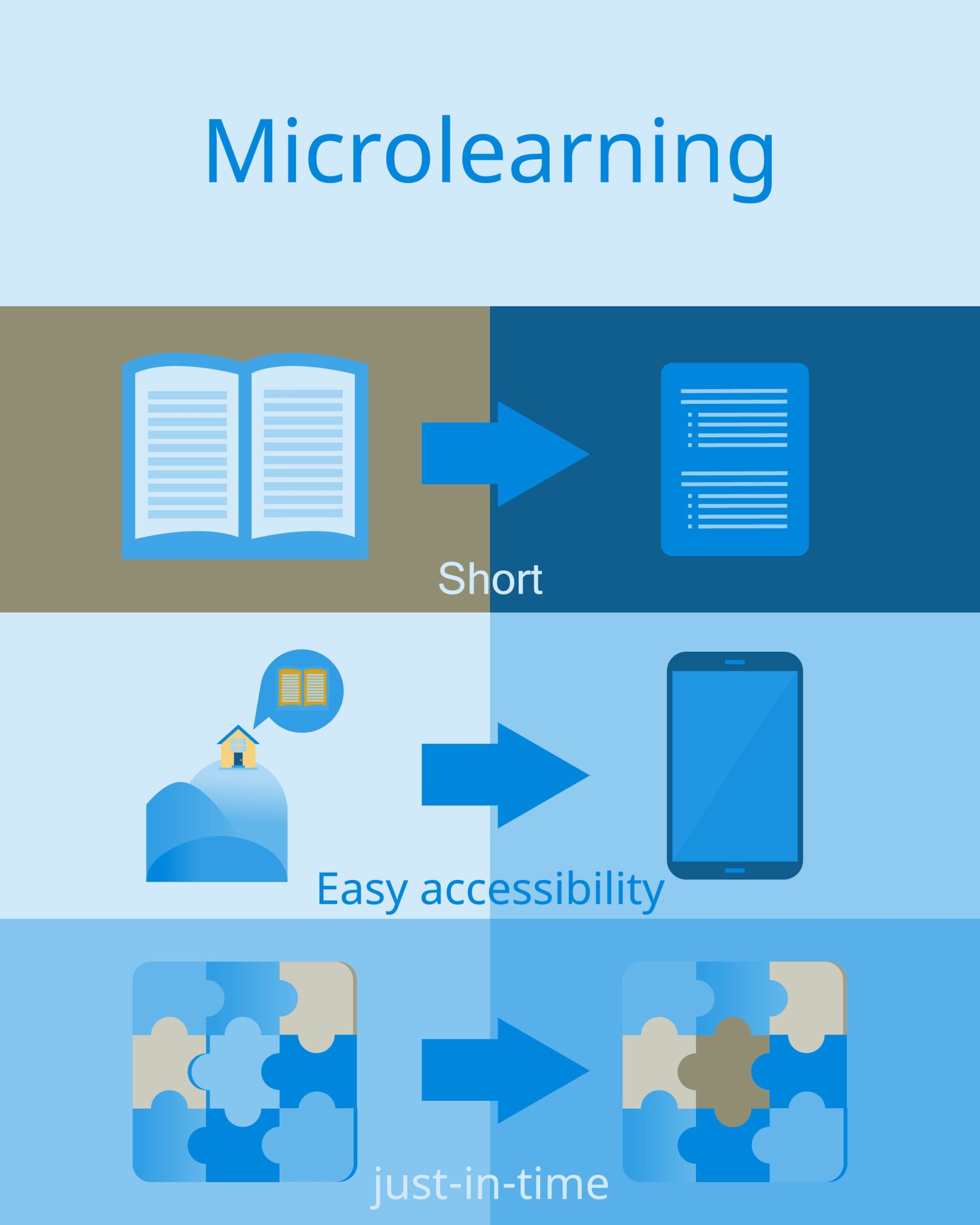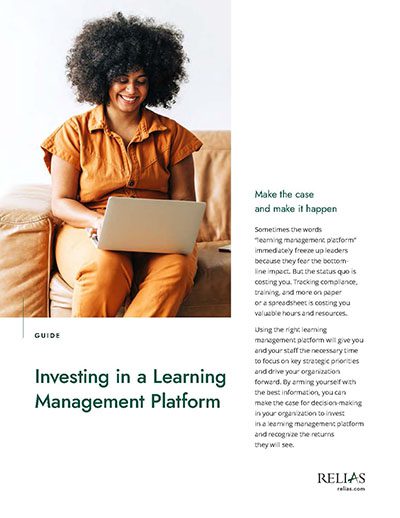Front-line staff in post-acute care settings are constantly on the go — from room to room in a skilled nursing facility or from home to home, caring for people with various needs. They are also required to complete compliance training and pursue continuous learning and professional development to stay updated and deliver high-quality care.
Clearly, fitting all of this into their busy work schedules is a challenge. More and more healthcare professionals are turning to microlearning as a way to balance it all.
What is microlearning?
Microlearning is an educational approach that breaks up learning content into small chunks. In an article for Knowledge Management & E-Learning, researchers Emerson and Berge define microlearning as ”learning in short, focused bursts designed to meet specific knowledge outcomes.”
Microlearning modules are often less than 10 minutes long and designed to provide staff with techniques, steps, or procedures. Learners can consume information quickly and effectively when and where they need it most.
“Microlearning is a great way for healthcare professionals to quickly get the information they need when and where they need it,” said Micah Goodman, a product manager for home-based care at Relias. “At Relias, our microlearning style content specifically calls out the key takeaways that staff can use the moment they finish the lesson.”
Six types of microlearning
While planning your staff training program, decide which kinds of microlearning best suit your learners’ needs.
· Mobile learning
Microlearning is perfect for mobile devices. According to a 2021 Pew research study, 95% of U.S. adults aged 18 to 49 own a smartphone. Your staff members can take their training on the go and take quizzes and watch short videos on their phones or tablets, no matter where they are.
· Interactive videos
Engaging and visually stimulating videos incorporating quizzes, simulations, and scenarios allow learners to actively participate and reinforce their knowledge.
· Infographics
Visual representations illustrate and explain key points and concepts in a concise and memorable format.
· Podcasts and audio clips
Short audio recordings allow learners to access valuable information and updates while on the go, making the format ideal for busy post-acute care staff.
· Case studies and scenarios
Real-life scenarios or case studies that simulate challenging situations help healthcare professionals apply their knowledge to practical care situations.
· Gamified learning
Incorporating game-like elements — quizzes, challenges, rewards, or leaderboards — can make the learning experience more engaging, enjoyable, and competitive.
The benefits of microlearning in healthcare training
Microlearning is a flexible, more effective, and more engaging way of learning. Here are some benefits your team can enjoy while using it.

· Time-efficient
Microlearning modules are designed to be brief and focused, allowing busy healthcare professionals to fit learning into short breaks in their schedules without disrupting patient care.
· Improved retention
The concise nature of microlearning facilitates better retention of information. Learners can revisit specific modules whenever needed, reinforcing long-term knowledge retention.
· Personalized learning
Microlearning can be tailored to individual learning needs and preferences. Learners can choose modules based on their specific areas of interest or knowledge gaps, enabling a personalized learning experience.
· Engaging and interactive
Incorporating multimedia elements, interactive quizzes, and simulations keeps learners engaged and enhances their understanding of complex clinical concepts.
· Cost-effective
Microlearning is often less expensive than traditional training methods. It eliminates the need for extensive classroom sessions, travel expenses, and printed materials, making it an attractive option for healthcare organizations with limited budgets.
Relias Vitals+Vision Podcast
Lora Sparkman has been a nurse and healthcare authority for nearly 40 years. Listen as she explores the connections between nurse education, high competency, and retention. She discusses a wide range of topics — from taking action on maternal mortality to incorporating blended learning modalities into nurse training.
How can you use microlearning in post-acute care?
Post-acute care staff working “on the floor” deal with a lot of pressure to provide excellent care and respond quickly to situations. Here are some ways microlearning can be helpful for them.
· Just-in-time training
Post-acute care staff can access quick refresher modules or short videos on specific procedures, protocols, or new treatment guidelines before they provide care to patients.
· Safety and compliance training
Microlearning can deliver bite-sized modules on infection prevention and control practices, medication safety, and patient privacy, ensuring your staff is up to date with evidence-based protocols.
· Continuing education
Microlearning platforms offer post-acute care professionals the opportunity to earn continuing education credits through short modules, quizzes, and assessments, keeping them informed about evidence-based practices and ensuring they maintain their licensure.
· Soft skills development
Microlearning can address effective communication, empathy, and teamwork, enabling your staff to enhance their interpersonal skills alongside care expertise.
Incorporating microlearning in healthcare training offers a flexible, engaging, and efficient way to provide ongoing education to your staff and ensure they are always ready to provide top-notch care. The bite-sized modules, interactive elements, and personalized approach make it an ideal knowledge acquisition and skill enhancement method for post-acute care professionals. As the healthcare sector evolves, microlearning will play an integral role in ensuring your staff members continue developing and succeeding in their roles.

Investing in a Learning Management Platform
This e-book highlights the top areas leaders should focus on when building the business case for a learning management platform. Also included is a downloadable worksheet that evaluates your current processes.
Download the e-book →





